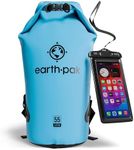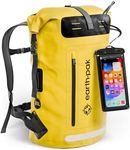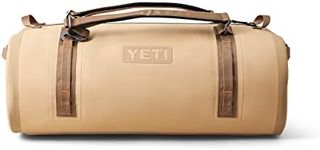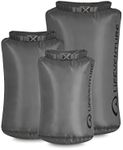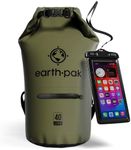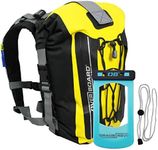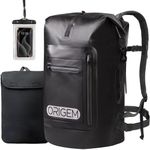Buying Guide for the Best Dry Bags
When choosing a dry bag, it's important to consider the specific activities you'll be using it for, as well as the conditions you'll encounter. Dry bags are essential for keeping your belongings safe and dry during outdoor adventures like kayaking, hiking, or camping. They come in various sizes, materials, and designs, each suited for different needs. Understanding the key specifications will help you select the best dry bag for your activities, ensuring your gear remains protected from water, dirt, and other elements.MaterialThe material of a dry bag is crucial because it determines the bag's durability, weight, and water resistance. Common materials include PVC, nylon, and vinyl. PVC is highly durable and waterproof, making it ideal for rugged use, but it can be heavier. Nylon is lighter and often coated with a waterproof layer, offering a good balance between weight and durability. Vinyl is also waterproof and durable but can be less flexible. Choose a material based on your activity: for heavy-duty use, opt for PVC; for lightweight activities, nylon might be preferable.
CapacityCapacity refers to the volume of the dry bag, usually measured in liters. This determines how much gear you can store inside. Small bags (5-10 liters) are suitable for personal items like phones and wallets. Medium bags (20-30 liters) can hold a change of clothes and some gear, while large bags (40 liters and above) are ideal for extended trips or carrying bulky items. Consider what you need to carry and choose a capacity that fits your requirements without being too bulky or heavy.
Closure TypeThe closure type of a dry bag is important for ensuring it remains watertight. Roll-top closures are the most common and effective, requiring you to roll the top down several times and then secure it with a buckle. Zipper closures offer convenience and quick access but may not be as waterproof as roll-tops. Some bags also feature a combination of both. If you need maximum waterproofing, especially in wet environments, a roll-top closure is recommended. For ease of access, consider a zipper closure.
Shape and DesignThe shape and design of a dry bag can affect how it fits in your gear setup and how comfortable it is to carry. Cylindrical bags are common and easy to pack, while flat bags can be more space-efficient. Some bags come with additional features like backpack straps, handles, or transparent windows for easy identification of contents. Consider how you'll be carrying the bag and what features might be beneficial for your activities. For example, backpack straps are useful for hiking, while a transparent window can be handy for quick access.
DurabilityDurability is a key factor, especially if you plan to use the dry bag in rugged conditions. This is influenced by the material, construction quality, and thickness of the bag. Reinforced seams and thicker materials generally offer better durability. If you're engaging in activities like white-water rafting or rock climbing, opt for a more durable bag to withstand abrasions and impacts. For less demanding activities, a lighter, less durable bag may suffice.
